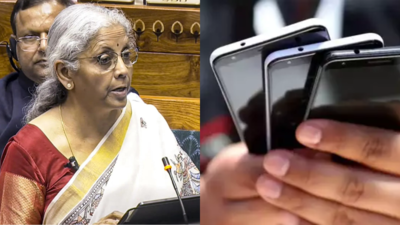NEW DELHI: Finance minister Nirmala Sitharaman presented her eighth consecutive Union Budget on Saturday. This brings her closer to the record of 10 budgets presented by former Prime Minister Morarji Desai, who holds the record for the most budgets presented across different terms. She is also the first woman to serve as a full-time finance minister.
The Budget for the financial year starting April 2025 (FY2025-26) was the 14th consecutive Budget under the Narendra Modi government since 2014.This includes two interim Budgets presented before the general elections in 2019 and 2024.
Also Read: ‘No tax till income upto Rs 12 lakh per year’, says FM Sitharaman
Ahead of the Budget, there was interest in how the announcements would affect the prices of goods and services, especially for the middle class.
Here’s the full list
Items that became cheaper
- Medicines: 36 life-saving medicines, including those for cancer and rare diseases, have become cheaper as they are now fully exempt from Basic Customs Duty (BCD). Six more medicines will attract only 5% duty.
- Critical minerals: The government has removed BCD on important minerals like cobalt and lithium-ion battery scrap, making it cheaper for industries to source these materials locally.
- Textile machinery: Two new types of looms used in producing textiles have become cheaper as they are now exempt from BCD.
- Electronics: The BCD on parts for making LED/LCD TVs and mobile phone batteries has been reduced or exempted to promote local manufacturing.
- Mobile phones: 28 more goods used in mobile phone battery production were added to the exempted capital goods list.
- Seafood: Import duties on frozen fish paste and fish hydrolysate (used in making fish feed) have been cut to help seafood exports.
- Leather: Wet Blue leather imports will be cheaper with no BCD, and the export duty on crust leather is now removed to help small tanners.
- Handicrafts: The export timeline for handicrafts has been extended, making it easier for exporters to ship goods.
- Shipbuilding: Raw materials for shipbuilding and repairs will remain exempt from BCD for the next ten years.
Also Read: Fiscal deficit target pegged at 4.4%, no income tax on income upto 12 lakhs, govt to introduce new I-T bill in Parliament next week
Items that became costlier
- Electronics (IFPD): The BCD on Interactive Flat Panel Displays (used in large screens) has been increased from 10% to 20%.
- Textiles (Knitted Fabrics): The BCD on knitted fabrics has been revised, which may lead to a slight increase in prices.
Meanwhile, the Economic Survey presented in Parliament on Friday projected India’s economic growth to be between 6.3 per cent and 6.8 per cent for the financial year 2025-26.
The survey said that India’s economic fundamentals remain stable due to a strong external account, fiscal discipline, and private consumption. It also mentioned that the government plans to support long-term industrial growth by focusing on research and development (R&D), micro, small, and medium enterprises (MSMEs), and capital goods.
“The fundamentals of the domestic economy remain robust, with a strong external account, calibrated fiscal consolidation and stable private consumption. On balance of these considerations, we expect that the growth in FY26 would be between 6.3 and 6.8 per cent,” the survey stated.
The survey also noted that food inflation is expected to decrease in the last quarter of FY25 due to lower vegetable prices and the arrival of the Kharif harvest. A good Rabi harvest may help control food prices in early FY26. However, inflation risks remain due to uncertain weather and rising global agricultural prices.



